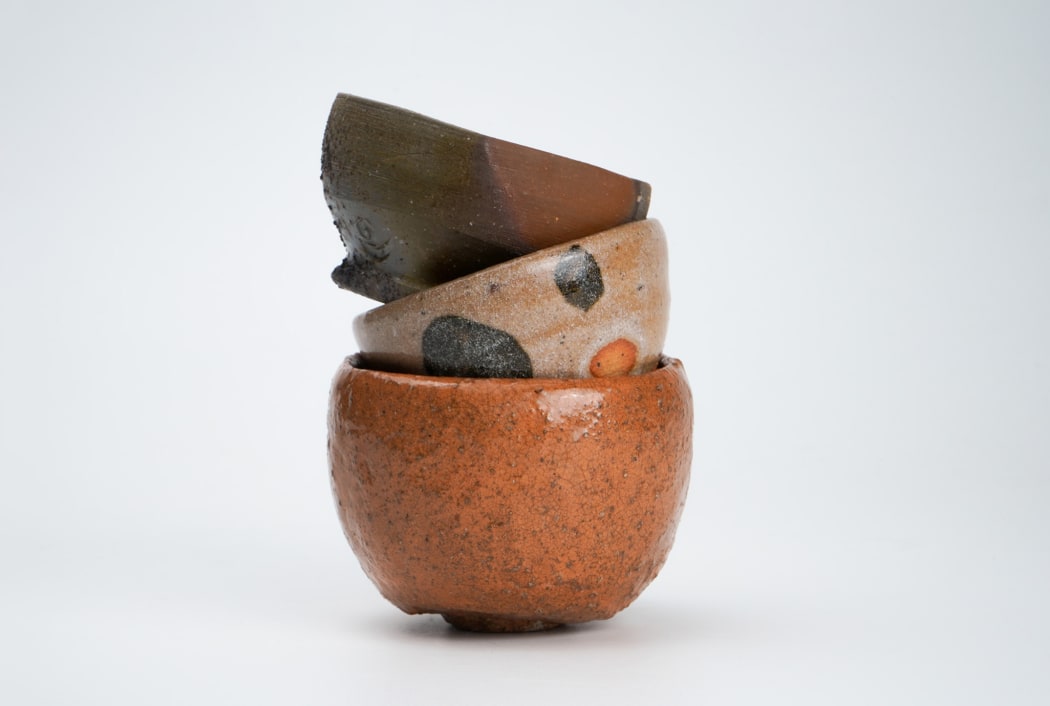
Summertime brings refreshing moments with loved ones, and with Father’s Day approaching, it's the perfect time to explore our curated collection of Shuuki (sake ware) and Chadogu (tea utensils).
Our versatile ochoko or guinomi cups, chawan (tea bowls), and delightful tokkuri (decanters), by artists and craftsmen from Japan, are not only ideal for sake, but can also be used for tea or small treats. Thoughtful and functional, they make a meaningful gift to express your appreciation, offering both an appreciation for art, and the joy of quality, shared time.
These delightful pieces make thoughtful gifts for art collectors, wine and sake connoisseurs, tea enthusiasts, and admirers of Japanese cuisine alike.
1. Heart and soul of Japanese ceramics
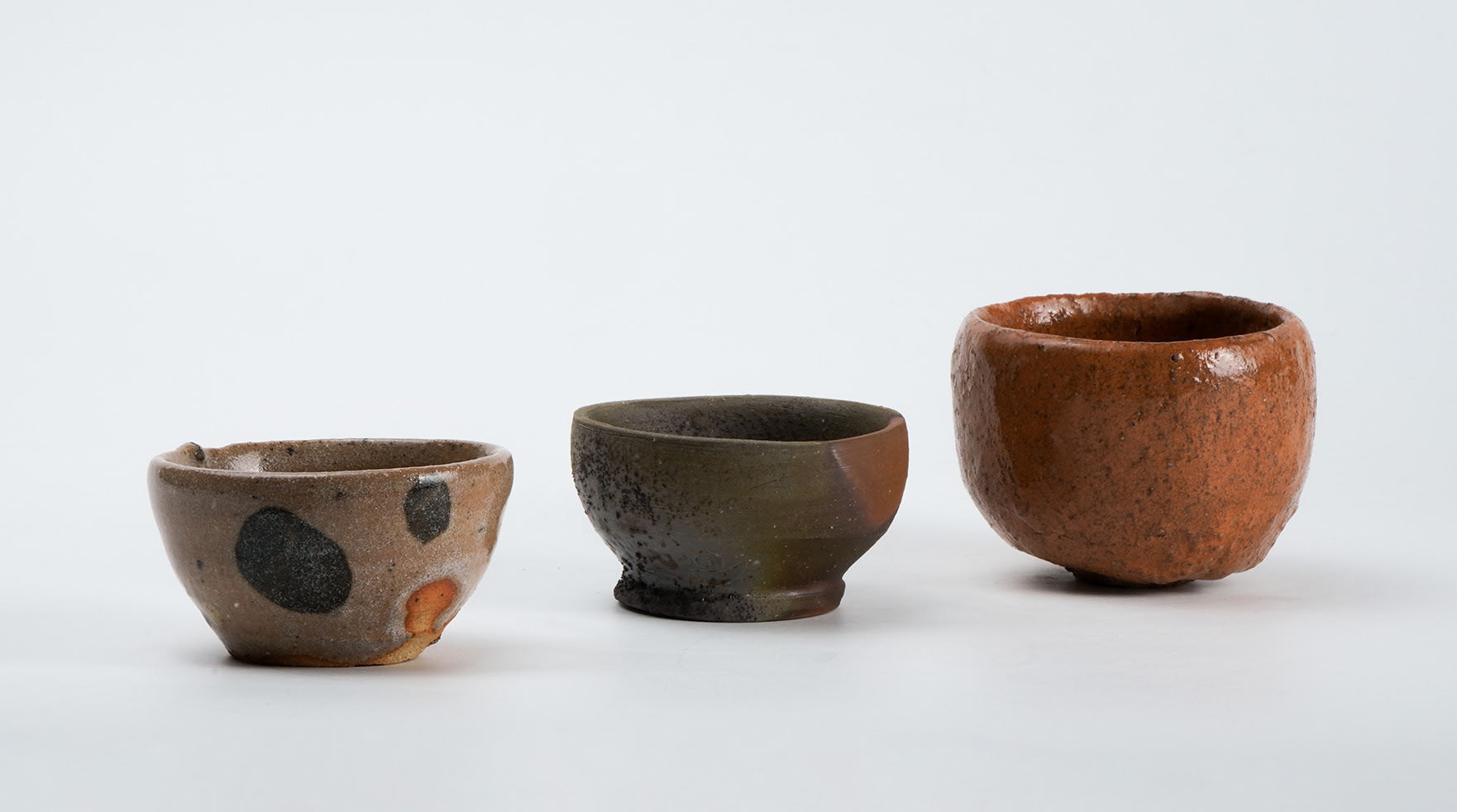
(Left to right) Kondo Seiko, Karatsu Guinomi / Fujiwara Kazu, Bizen guinomi / Omae Satoru, red guinomi. Browse sake cups here.
Classic Japanese glazes from regions across Japan offer rich opportunities for the contemplation of beauty and the expression the wabi-sabi aesthetic, which is an embrace of nature and imperfection. The trio of cups above exemplifies the diversity of ceramic expression: from left to right, works by Kondō Seiko (Karatsu ware), Fujiwara Kazu (Bizen, wood-fired), and Omae Satoru (red glaze) highlight the distinct regional voices and firing techniques that define Japanese ceramic artistry. The artists are contemporary potters who explore the glazing and firing techniques of Japanese ceramic traditions. Take your pick!
2. Fine tea bowls for the tea connoisseur
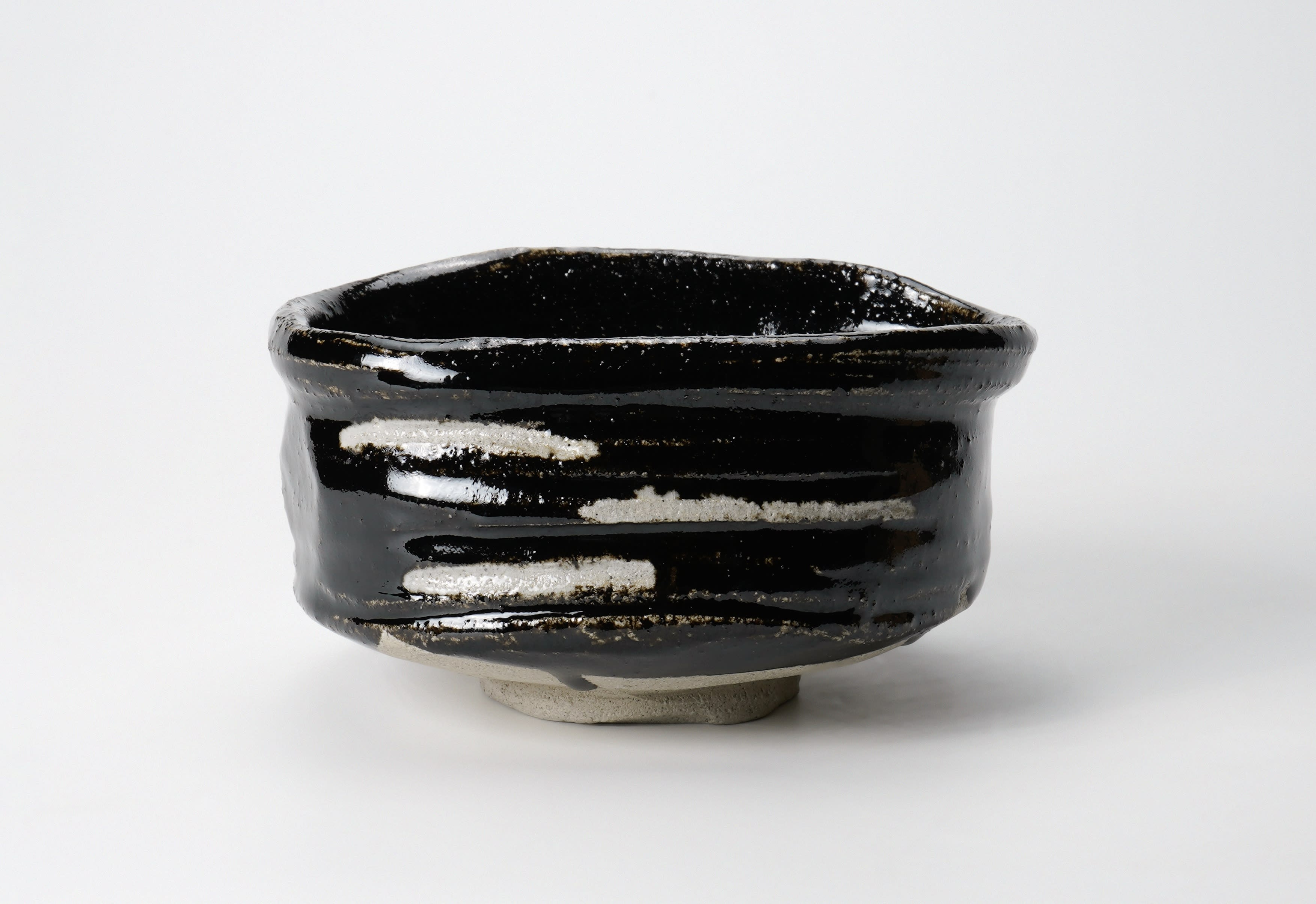
Takiguchi Kiheiji 瀧口喜兵爾, Black Oribe Tea Bowl | Inquire here
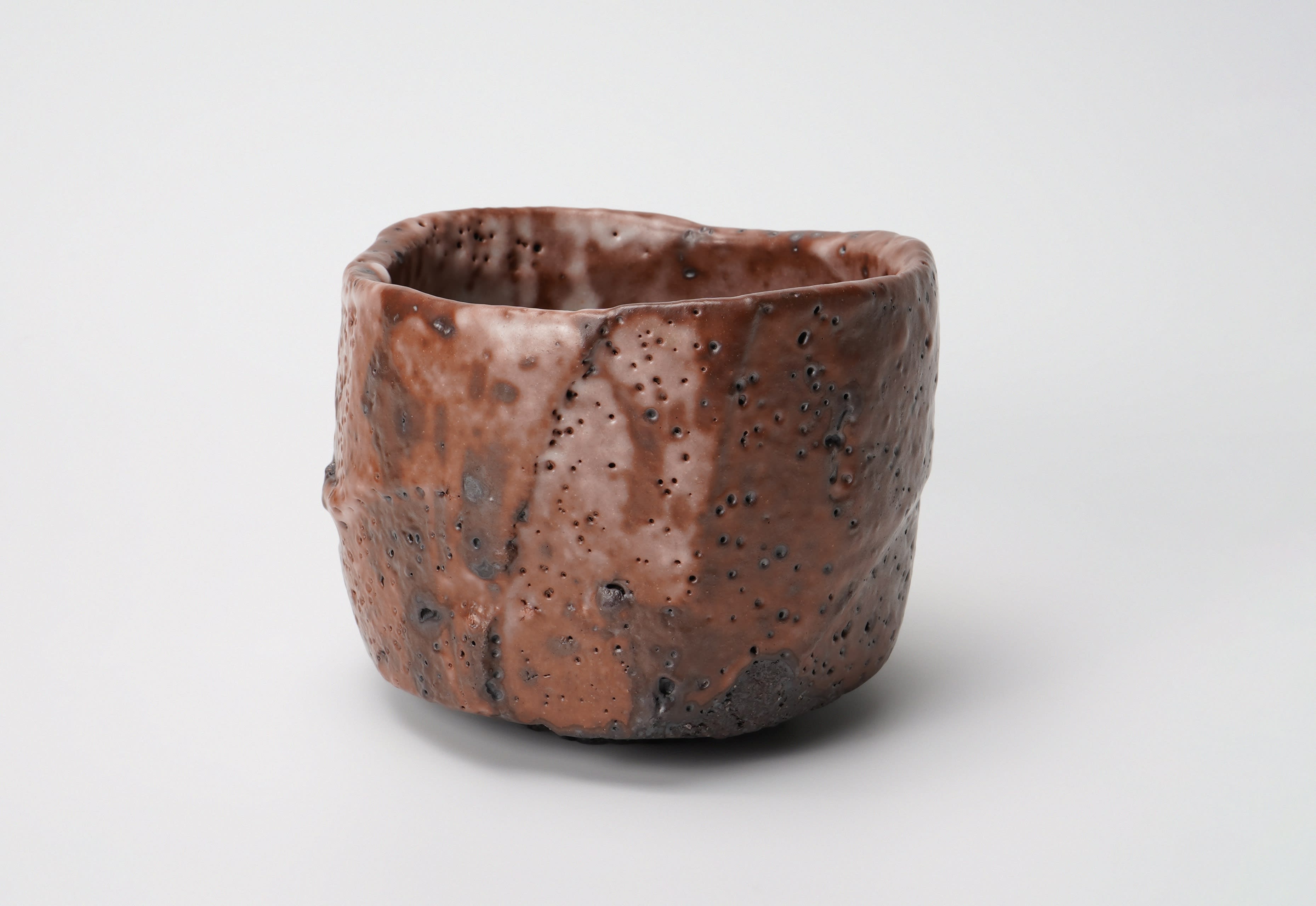
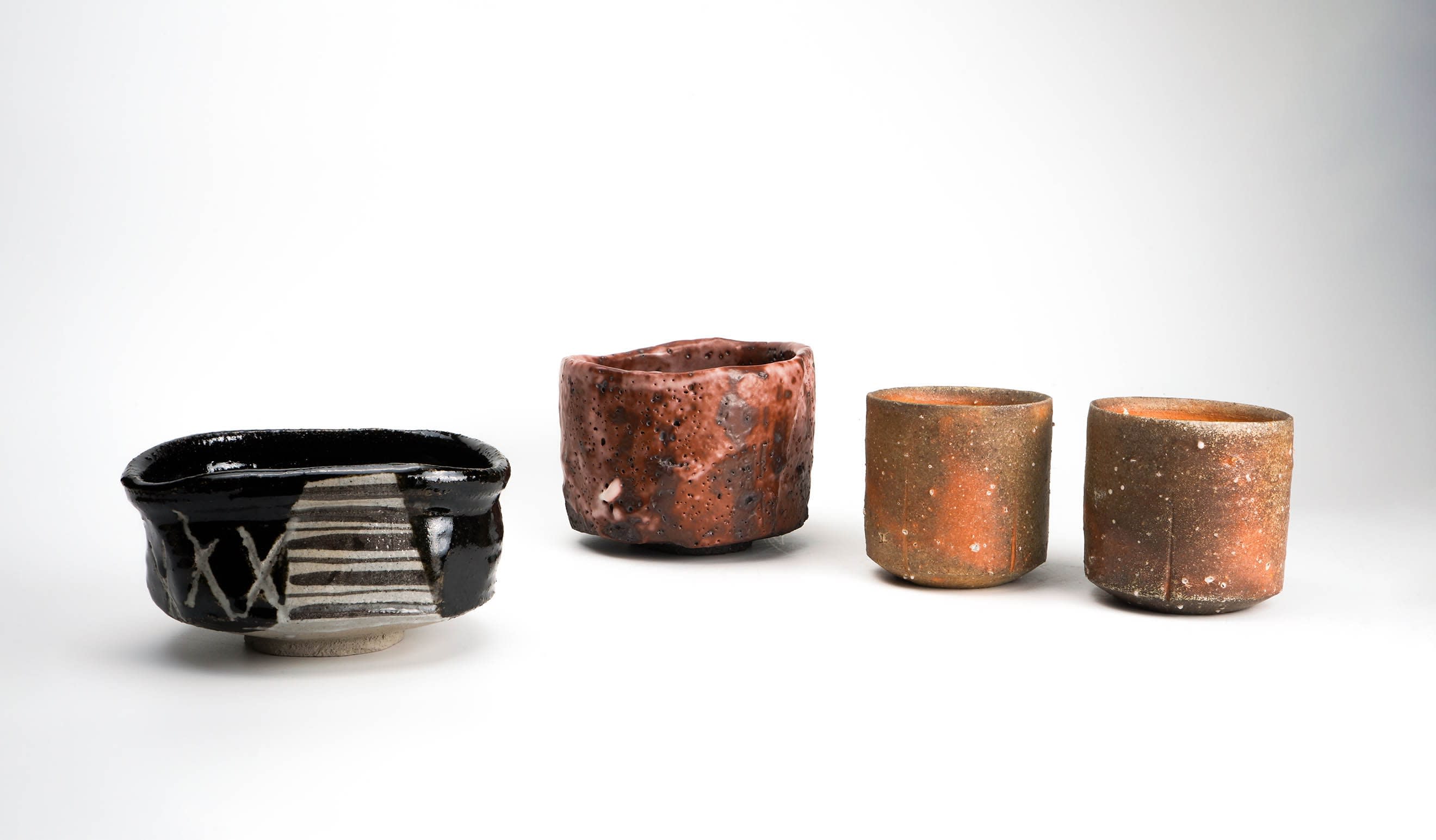
3. Re-imagining tradition: forms and surfaces by contemporary artists

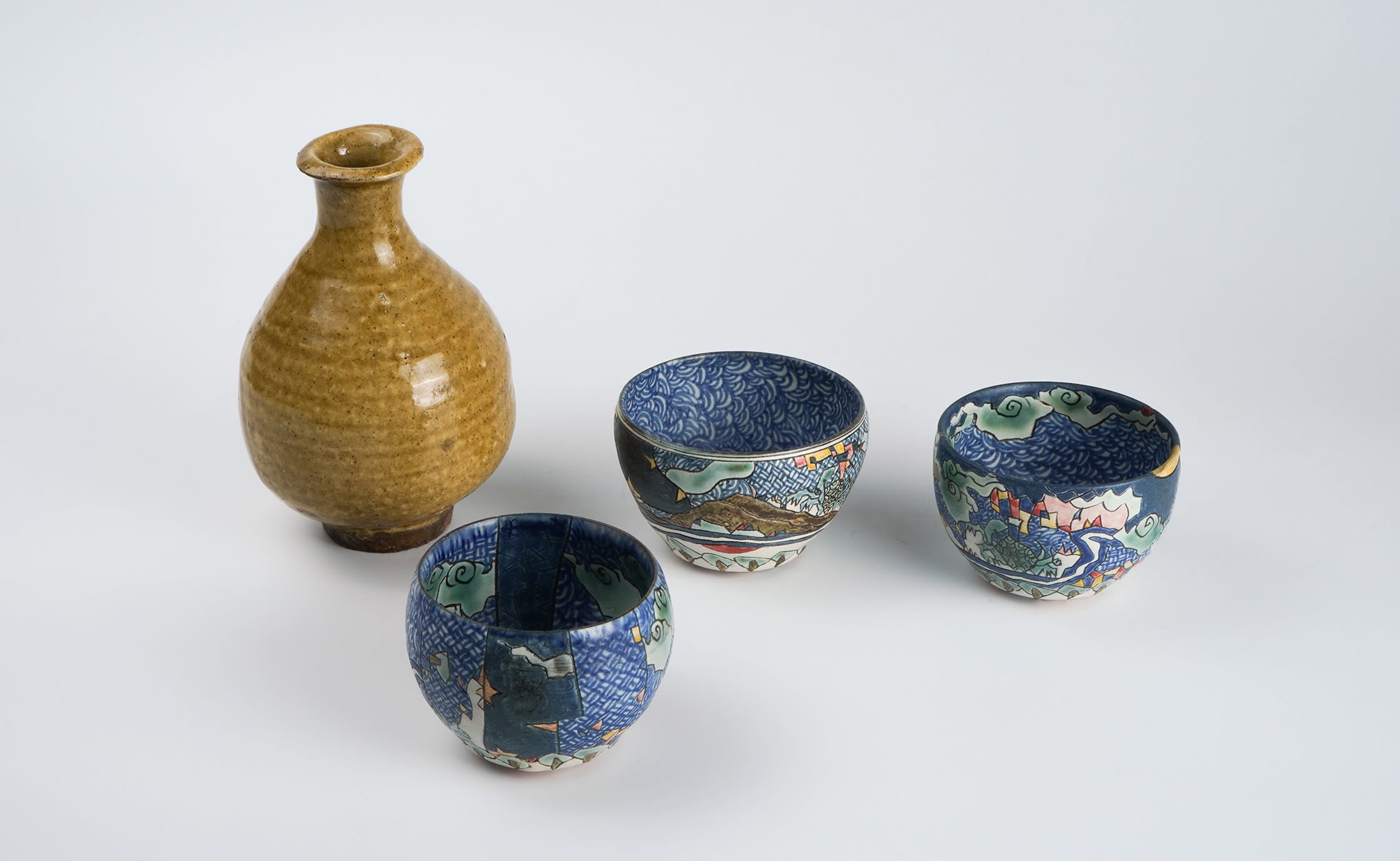
(Above) Matsutani Fumio, sake vessel. Browse works by the artist here.
(Below) Komago Tetsutaro, sake cups. Browse works by the artist here.
Contemporary artists continue to reinterpret tradition, bringing fresh perspectives to Japanese ceramics. Their innovations not only enrich the field but also invite new conversations about the potential of sake vessel as a form, one that bridges function, beauty, and artistic expression.
The works above by Matsutani Fumio (brown) and Komago Tetsutarō (blue) exemplify this spirit of exploration. Komago draws inspiration from the ocean, incorporating rhythmic, scrolling motifs into his surfaces. Matsutani, by contrast, engages with design and architectural form, creating pieces that are bold in structure yet refined in detail.
Together, their works offer a dynamic dialogue between past and present—between tradition and individual vision.
4. Microscopic detail
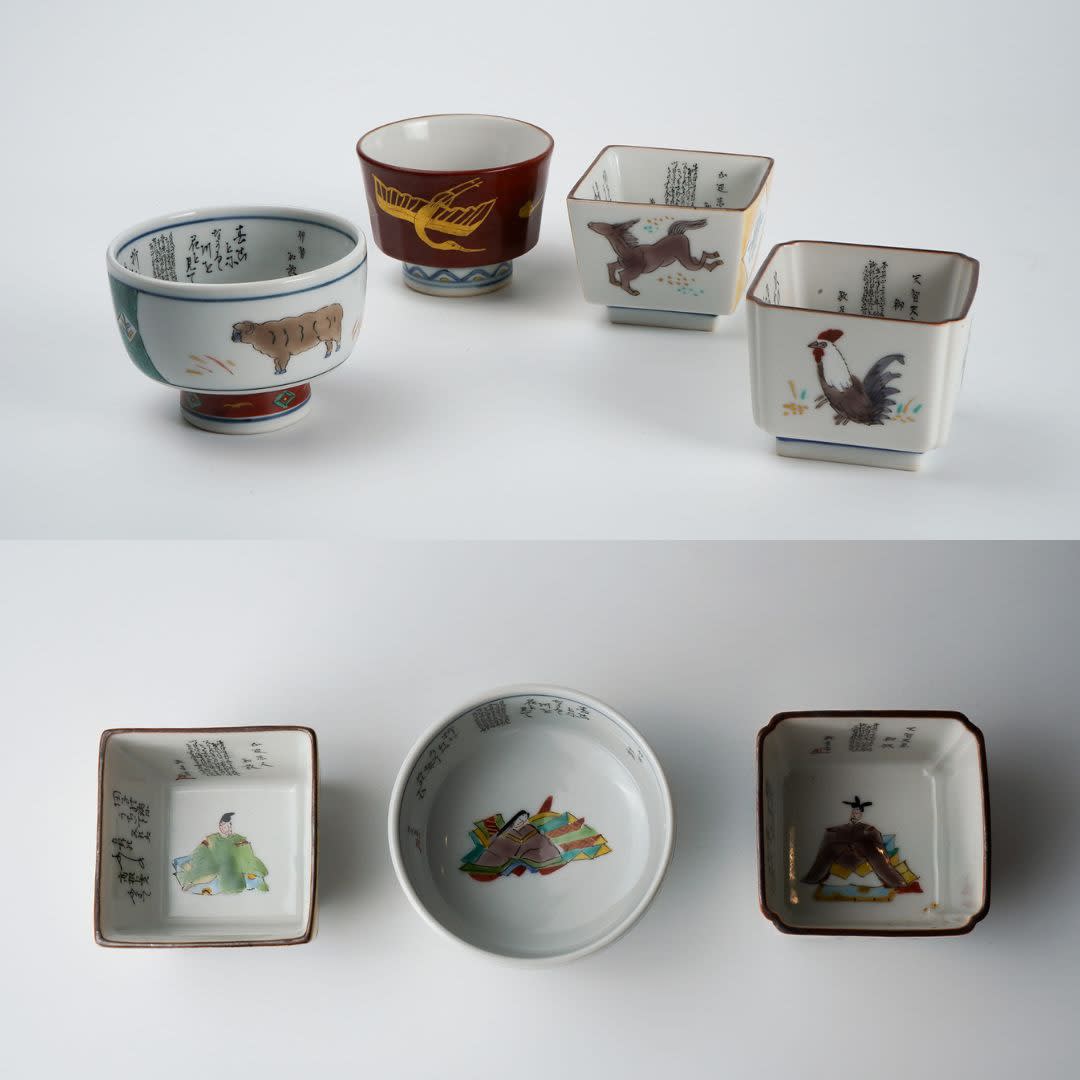
Tamura Keisei, group of sake cups. Browse works by the artist here.
For lovers of Japanese literature and craftsmanship, these small ochoko cups by Tamura Keisei invite close, prolonged study. Tamura hails from a lineage of potters known for the rare and meticulous tradition of micro-calligraphy on ceramics. At this intimate scale, inscribing entire verses from classical literature, such as The Tale of Genji, in black glaze is a tremendous technical feat, accomplished using a fine brush and extraordinary precision.
These particular cups are zodiac-themed, each one decorated with references to the twelve animals of the Chinese and Japanese zodiac systems. These include creatures such as the sheep, snake, horse, and rooster, which are used to mark years in a twelve-year cycle. In Japan, these animals are associated not only with birth years but also with personality traits, seasonal cycles, and spiritual significance.
We warmly welcome you to contact us for more information.